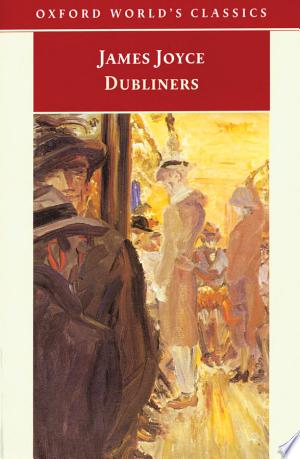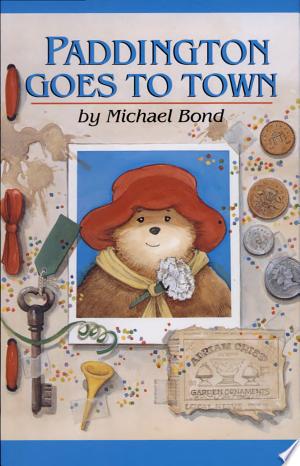Estimated read time: 5 min read
One Sentence Summary
A collection of fifteen short stories that provide glimpses into the lives of ordinary people in early 20th century Dublin.
Table of Contents
Introduction
"Dubliners" is a captivating collection of fifteen short stories written by James Joyce. First published in 1914, this literary masterpiece is set in the city of Dublin, Ireland, and offers readers a poignant portrayal of the everyday lives of ordinary Dubliners. Through his brilliant storytelling, Joyce unveils the complexities of human nature, the struggles of the working class, and the influence of Irish culture and politics on individual lives.
Brief Synopsis
"Dubliners" is divided into four distinct sections: Childhood, Adolescence, Maturity, and Public Life. Each section focuses on different aspects of life in Dublin, highlighting the themes of paralysis, escape, and epiphany.
Childhood
The collection opens with "The Sisters," introducing readers to a young boy who is mourning the death of a priest with whom he shared a close relationship. This story serves as a prelude to the themes and motifs that will be explored throughout the collection.
In "An Encounter," two young boys decide to skip school and venture into the city, where they encounter a peculiar man who turns out to be a pedophile. This encounter exposes the dark underbelly of Dublin society and the boys' loss of innocence.
Adolescence
"Araby" follows a young boy's infatuation with Mangan's sister, a girl he desires but feels unable to reach. The story beautifully captures the protagonist's frustration and the disappointment of unrequited love.
"Eveline" tells the story of a young woman who must make a decision between staying in Dublin, where she is trapped by familial duties and obligations, or eloping with her lover to Buenos Aires. This tale delves into the themes of paralysis and the constraints of societal expectations.
Maturity
In "The Boarding House," Mrs. Mooney successfully manages her boarding house by orchestrating a forced marriage between her daughter, Polly, and one of the tenants, Mr. Doran. This story explores the power dynamics between men and women in Dublin society.
"The Dead," the final and longest story in the collection, is set during a winter gathering at the Morkan sisters' house. Gabriel Conroy, one of the guests, experiences an epiphany as he reflects on his own mortality and the profound impact of the past on the present. "The Dead" is considered one of Joyce's finest works, demonstrating his mastery of language and his ability to captivate readers with his unique style.
Public Life
The final section of "Dubliners" explores the impact of politics and national identity on the lives of Dubliners. "Ivy Day in the Committee Room" depicts a group of men gathering at the political party headquarters on the anniversary of Charles Parnell's death. Joyce highlights the disillusionment and personal failures of these men as they reminisce about Parnell's legacy.
Main Characters
| Character | Description |
|---|---|
| Gabriel Conroy | The protagonist of "The Dead." Gabriel is a middle-aged, introspective man who experiences an epiphany at a winter gathering. |
| Eveline Hill | The titular character in "Eveline." She struggles with the decision of whether to stay in Dublin or escape to Buenos Aires with her lover. |
| Mrs. Mooney | The determined and shrewd owner of the boarding house in "The Boarding House." She orchestrates the forced marriage of her daughter, Polly. |
| Farrington | A character in "Counterparts." He is a resentful and frustrated office worker who takes his dissatisfaction out on his subordinates. |
| Father Flynn | The deceased priest in "The Sisters." He plays a significant role in the young boy's life and his journey of understanding. |
Themes and Insights
"Dubliners" explores various themes that shed light on the human condition and the broader socio-political issues of Dublin at the time. Some of the prominent themes include:
Paralysis
Paralysis, whether physical or emotional, is a recurring motif throughout the collection. Joyce portrays the characters' inability to break free from the monotony and constraints of Irish society. This paralysis reflects the stagnation of Dublin and its inhabitants, trapped in a cycle of routine and societal expectations.
Escape
Many characters in "Dubliners" yearn for an escape from their monotonous and stifling lives. They seek liberation from their burdens, whether it be through physical escape or daydreaming. However, most are ultimately unable to break free, highlighting the pervasive sense of entrapment felt by many Dubliners.
National Identity
Joyce also delves into the impact of Irish politics and culture on individual lives. The characters' perspectives on Irish identity and their disillusionment with political figures reflect the complex relationship between the Irish people and their sense of nationhood.
Reader's Takeaway
"Dubliners" is a poignant and thought-provoking collection that provides deep insights into the human condition. Joyce's skillful writing and masterful storytelling captivate readers, inviting them to reflect on their own lives and the universal struggles faced by individuals trapped in societal expectations. This collection serves as a powerful testament to Joyce's ability to illuminate the complexities of human nature and the impact of societal paralysis.
Conclusion
In "Dubliners," James Joyce offers readers an illuminating and introspective journey through the lives of ordinary Dubliners. Through his poignant storytelling, Joyce tackles themes of paralysis, escape, and national identity, leaving readers with a deep understanding of the complexities of human nature. This collection serves as a timeless exploration of the struggles and triumphs of individuals trapped within the confines of societal expectations. "Dubliners" continues to be celebrated for its literary brilliance and its profound insights into the human condition.
Dubliners FAQ
What is 'Dubliners' about?
'Dubliners' is a collection of 15 short stories by James Joyce, which paints a vivid and realistic portrait of life in Dublin, Ireland, at the turn of the 20th century.
Who is the author of 'Dubliners'?
The author of 'Dubliners' is James Joyce, an Irish writer known for his influential works in modernist literature.
When was 'Dubliners' first published?
'Dubliners' was first published in 1914.
Are the stories in 'Dubliners' interconnected?
While the stories in 'Dubliners' are not directly interconnected, they are thematically linked and collectively provide a comprehensive portrait of the city and its inhabitants.
What themes are explored in 'Dubliners'?
Some of the main themes explored in 'Dubliners' include paralysis, escape and confinement, identity, religion, and the search for personal freedom.
Are the stories in 'Dubliners' based on real events?
Although the stories in 'Dubliners' are fictional, they are heavily influenced by James Joyce's own experiences and observations of Dublin and its residents.
Is 'Dubliners' suitable for all ages?
'Dubliners' is generally recommended for mature readers due to its complex themes and exploration of adult topics.
What is the writing style of 'Dubliners'?
James Joyce's writing style in 'Dubliners' is characterized by his use of vivid imagery, carefully crafted language, and intricate narrative structures.
Are there any film adaptations of 'Dubliners'?
There have been several film adaptations of individual stories from 'Dubliners,' but as of now, there is no complete film adaptation of the entire collection.
Has 'Dubliners' received critical acclaim?
Yes, 'Dubliners' has received significant critical acclaim for its masterful storytelling, realistic portrayal of Dublin, and exploration of human nature and society.





